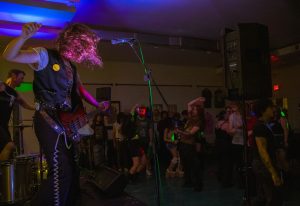Computer part of love trio
April 19, 1990
Every once in a while, a movie comes along that takes a tried-and-true formula and warps it in a truly original way.
This is the case with the 1984 film “Electric Dreams,” which takes the standard love triangle a step further by making one of the trio a computer.
Psychological, sociological and philosophical implications aside, it makes for a thoroughly charming and unique story.
The story revolves around a pathologically disorganized architect named Miles who, in search of a tool to structure his life, buys a computer. Through an informational overload and accidental champagne bath, the computer gains ‘human’ feelings and personality.
Events run along fine, with Miles and the computer becoming tentative friends, until Madeline, a cellist, moves in next door and both Miles and the computer become infatuated with her.
The computer, named Edgar, becomes attracted to Madeline through her music, which it hears through the vent. As Madeline’s music intrigues Edgar, her personality attracts Miles. Each relationship grows at a steady pace, and the tension between man and machine is heightened as each becomes more and more enthralled with the woman.
The film works on many levels. The story is interesting and the characters likable and real. On the surface, it appears as a light-hearted romance and genuinely works as such. Underneath lies the subtext of man vs. machine and how far we can actually go in playing God before we go too far.
As well, it questions the true essence of love, the emotional catharsis of creativity, the ethereal bonds between creative personalities.
Steve Barron, the film’s director, was primarily known before ‘Electric Dreams’ for his work in music video (like Michael Jackson’s “Billie Jean”) and his innovative direction is sharp and well-done.
One downfall of the film is its reliance on music video. Too many scenes are merely mise-en-scene montage shots while an entire song winds through the narrative. There is one scene where this works, during the song “Love is Love.” This scene advances the mood and plotline greatly, but if used in too many sequences, this technique seems forced.
Overall, I can recommend ‘Electric Dreams’ on the merits of its originality and simple charm. It never gained much of a following (despite good critical reviews) during its theatre release, but it certainly is deserving of a larger audience through home video.






